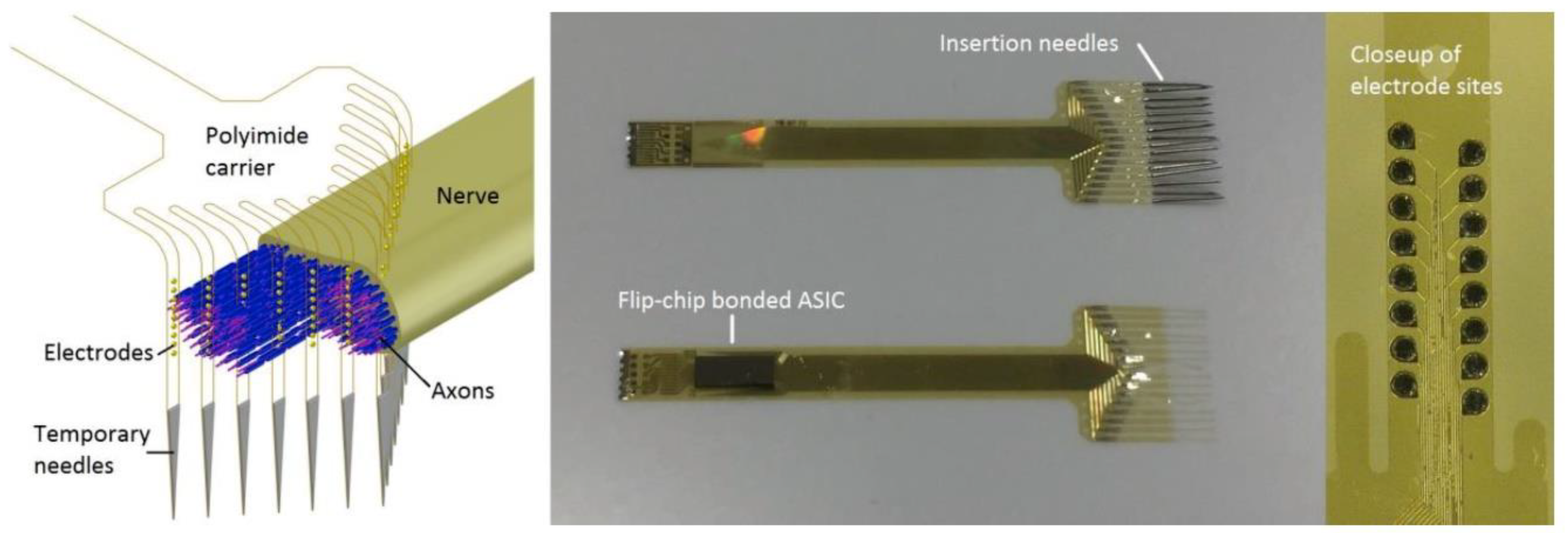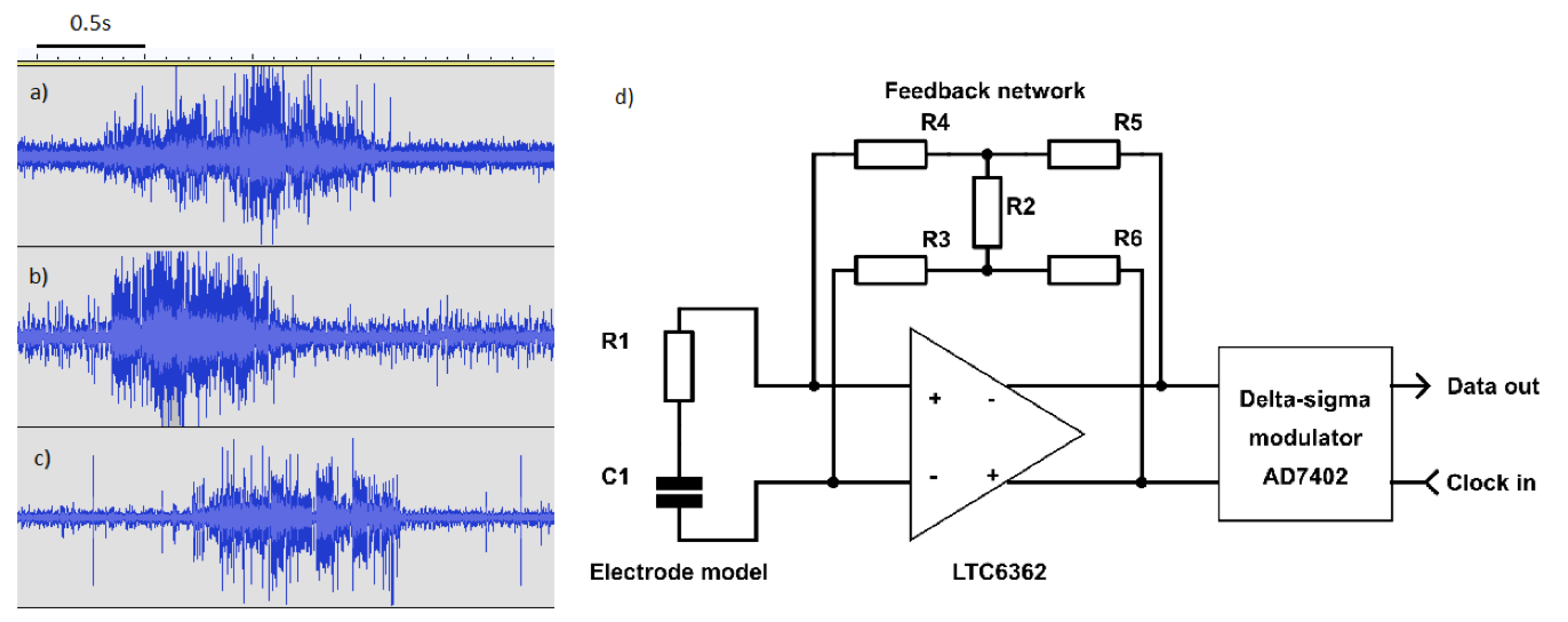Polymer-CMOS Hybrid Neural Probes for Large-Scale Neuro-Electronic Interfacing †
Abstract
:1. Introduction
2. Materials and Methods
2.1. Electrode, Interconnect and Insertion Structure Fabrication
2.2. Electronic Design
2.3. Electrophysiological Testing
3. Results and Discussion
3.1. Hybrid Assembly
3.2. Electronic Testing and Measurements
4. Conclusion and Future Research
Author Contributions
Acknowledgments
Conflicts of Interest
References
- Lopez, C.M.; Putzeys, J.; Raducanu, B.C.; Ballini, M.; Wang, S.; Andrei, A.; Rochus, V.; Vandebriel, R.; Severi, S.; Van Hoof, C.; et al. A Neural Probe with with Up to 966 Electrodes and Up to 384 Configurable Channels in 0.13μm SOI CMOS. IEEE Trans. Biomed. Circ. Syst. 2017, 11, 510–522. [Google Scholar] [CrossRef] [PubMed]
- Ceyssens, F.; Puers, R. Insulation lifetime improvement of polyimide thin film neural implants. J. Neural Eng. 2015, 12, 054001. [Google Scholar] [CrossRef] [PubMed]
- Xiang, Z.; Yen, S.C.; Xue, N.; Sun, T.; Tsang, W.M.; Zhang, S.; Liao, L.D.; Thakor, N.V.; Lee, C. Ultra-thin flexible polyimide neural probe embedded in a dissolvable maltose-coated microneedle. J. Micromech. Microeng. 2014, 24, 065015. [Google Scholar] [CrossRef]
- Bharucha, E.; Sepehrian, H.; Gosselin, B. A survey of neural front end amplifiers and their requirements toward practical neural interfaces. J. Low Power Electron. Appl. 2014, 4, 268–291. [Google Scholar] [CrossRef]
- Mahmoodi, A.; Joseph, D. Pixel-level delta-sigma ADC with optimized area and power for vertically-integrated image sensors. In Proceedings of the 2008 51st Midwest Symposium on Circuits and Systems, Knoxville, TN, USA, 10–13 August 2008. [Google Scholar]




Publisher’s Note: MDPI stays neutral with regard to jurisdictional claims in published maps and institutional affiliations. |
© 2022 by the authors. Licensee MDPI, Basel, Switzerland. This article is an open access article distributed under the terms and conditions of the Creative Commons Attribution (CC BY) license (https://creativecommons.org/licenses/by/4.0/).
Share and Cite
Bakula, M.; Ceyssens, F.; Puers, R. Polymer-CMOS Hybrid Neural Probes for Large-Scale Neuro-Electronic Interfacing. Proceedings 2018, 2, 1066. https://doi.org/10.3390/proceedings2131066
Bakula M, Ceyssens F, Puers R. Polymer-CMOS Hybrid Neural Probes for Large-Scale Neuro-Electronic Interfacing. Proceedings. 2018; 2(13):1066. https://doi.org/10.3390/proceedings2131066
Chicago/Turabian StyleBakula, Marko, Frederik Ceyssens, and Robert Puers. 2018. "Polymer-CMOS Hybrid Neural Probes for Large-Scale Neuro-Electronic Interfacing" Proceedings 2, no. 13: 1066. https://doi.org/10.3390/proceedings2131066




